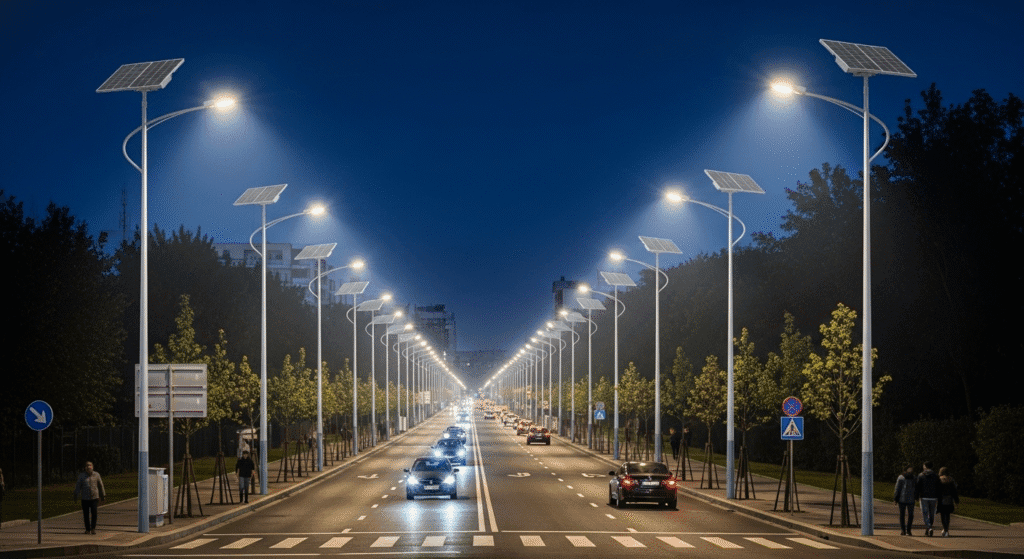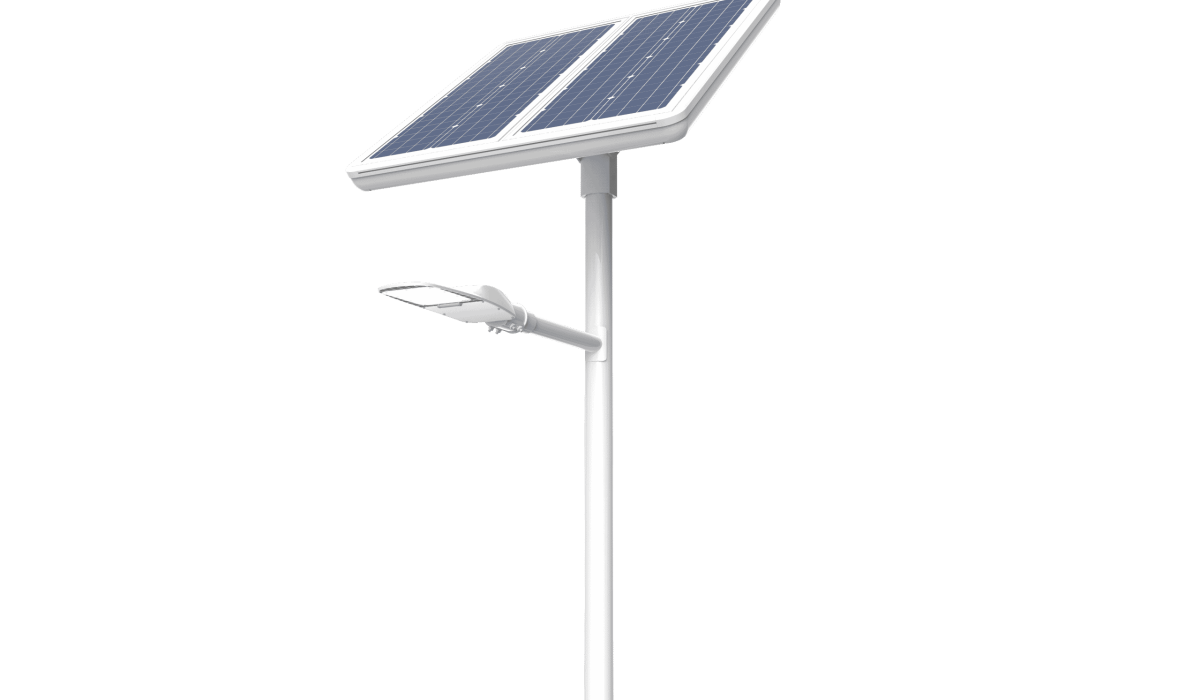After more than fifteen years of working on infrastructure projects across Africa, one fact has become clear to me: lighting and public safety are inseparable. In many communities, darkness after sunset means higher accident rates and greater risks of crime. Solar street lights have emerged as a powerful solution—not only addressing unreliable grid electricity but also restoring a sense of security to neighborhoods.
In this article, I will combine industry insights with a recent solar street lighting project in Nigeria, showing how solar street lights contribute to public safety, how they work, and what measurable impact they can create.
What Are Solar Street Lights and How Do They Work?
The principle is simple: solar panels capture sunlight during the day, store energy in batteries, and release it at night to power LED lamps.
Key components include:
- Solar panel – Generates electricity from sunlight.
- Battery – Stores energy; lithium batteries perform better in hot climates.
- LED lamp – High efficiency, long lifespan, bright illumination.
- Controller – Regulates charging and discharging, prevents overuse.
- Motion sensor (in some models) – Enables smart dimming and energy savings.
Because they are off-grid and self-sustaining, solar street lights remain operational even during blackouts or natural disasters, ensuring safety in critical moments.
Types of Solar Street Lights and Their Safety Benefits
Different types of solar street lights offer different contributions to public safety:

Traditional Solar Street Lights and Public Safety
- Separate components (panel, battery, lamp).
- Benefit: Reliable, all-night illumination—ideal for highways, industrial zones, and urban streets.
Integrated Solar Street Lights and Public Safety
- All-in-one design with panel, battery, and lamp in one housing.
- Benefit: Easy to install, low maintenance—perfect for rural and remote communities.
Smart Solar Street Lights and Public Safety
- Equipped with sensors, remote monitoring, and adaptive dimming.
- Benefit: Supports security-sensitive areas, can integrate with CCTV and smart city systems.
Comparison of Solar Street Light Types and Their Impact on Public Safety
| Type | Public Safety Contribution | Best Use Cases |
|---|---|---|
| Traditional | Reliable all-night illumination reduces crime and accidents | Highways, industrial areas, city roads |
| Integrated | Rapid deployment improves rural safety | Villages, small towns |
| Smart | Adaptive lighting + monitoring boosts crime prevention | Urban centers, security zones |
How Solar Street Lights Improve Public Safety
Deterring Crime
Lighting reduces the opportunity for theft and assaults. In several East African projects, local police reported a noticeable drop in night-time crime after solar street lights were installed.
Enhancing Road Safety
Better visibility lowers traffic accidents. On one rural Kenyan road, motorbike accidents decreased by nearly 40% after street lights were deployed.
Supporting Emergency Response
During power outages or disasters, solar street lights provide critical illumination for evacuation routes and first responders.
Promoting Community Activity
Well-lit environments encourage evening markets, social gatherings, and sports. Communities with active nighttime engagement are safer and more vibrant.
Project Case Study: Solar Street Lights and Public Safety in Nigeria

Project Background
Nigeria, with over 220 million people, is the largest economy in West Africa but suffers from severe electricity shortages. According to the World Bank, 43% of Nigerians lack access to reliable power, and blackouts are frequent.
This directly affects road safety and crime. An estimated 20% of night-time traffic accidents in Nigeria are linked to poor or nonexistent lighting.
In 2023, a solar lighting initiative was launched to address these issues. Our company was awarded the contract to deliver and install 100 units of 200W integrated solar street lights on 9-meter poles, covering 4.2 km of urban and peri-urban roads.
Technical Specifications
- LED Lamp: 200W, ≥26,000 lumens.
- Pole: 9m galvanized steel, wind resistance up to 130 km/h.
- Solar Panel: 200W monocrystalline, 25+ years lifespan.
- Battery: LiFePO₄, 12.8V 120Ah, lifespan 5+ years.
- Controls: Dusk-to-dawn with dimming; optional GSM monitoring.
- Lighting Target: ≥30 lux average, ≥0.35 uniformity.
Design and Implementation
- Coverage: 4.2 km, including arterial and residential roads.
- Pole Layout: Staggered double-sided (main roads), single-sided (narrow roads).
- Timeline: 18 weeks from survey to commissioning.
- Transport: 2×40HQ containers shipped from Shanghai to Lagos, then 85 km inland.
Challenges and Solutions
- Hot, humid climate: Used LiFePO₄ batteries with thermal management.
- Security risks: Anti-theft bolts, elevated battery boxes, and community involvement.
- Traffic interference: Installed during off-peak hours with diversions.
- Language barriers: English-speaking coordinators and local staff training.
Results and Social Impact
- Illuminance test: 32.5 lux average (target ≥30).
- Autonomy: 4 days during cloudy weather.
- Safety: Night-time accidents fell by ~18% within 3 months.
- Community: Shops stayed open 2–3 hours later; residents felt safer walking at night.
- Human stories: Students felt safer commuting; vendors benefited from evening trade; villagers helped guard equipment during installation, creating ownership.
Environmental and Economic Benefits
- Carbon offset: 82 tons of CO₂ saved annually.
- Economic boost: Extended commercial hours increased local business revenue.
- Scalability: A replicable model for other Nigerian states and West Africa.
Conclusion: Public Safety and Solar Lighting Go Hand in Hand
The Nigeria project confirmed what many of us in the field have seen: solar street lights are more than just an energy solution—they are a public safety asset.
They reduce accidents, deter crime, support emergency response, and bring life back to communities after dark.
My personal recommendation: in any region where electricity is unreliable, solar street lights are among the fastest, most cost-effective ways to improve public safety.


